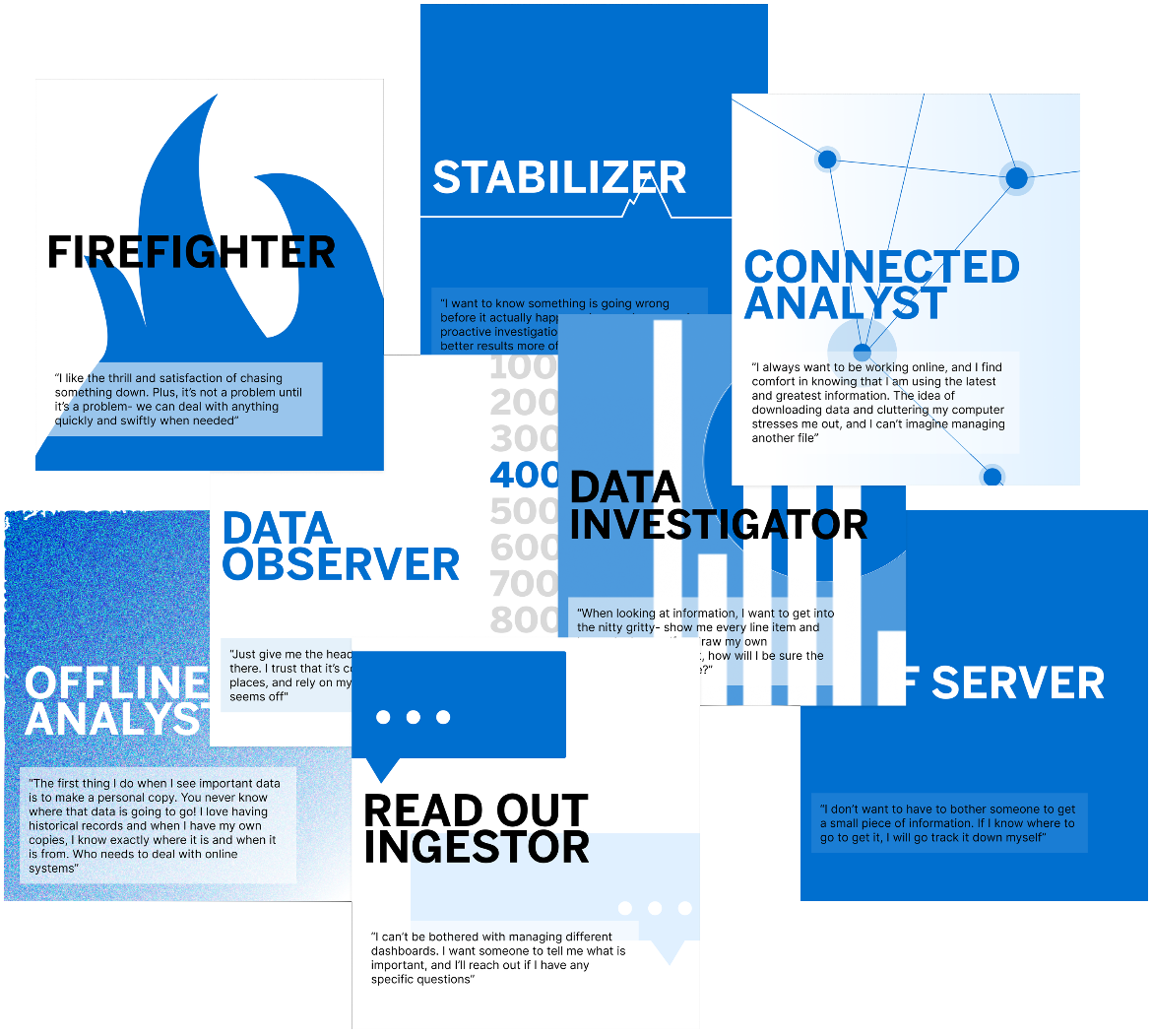Democratizing Data: Amex Data Storefront
As part of my work with the American Express Technology Enablement Team, I built our first-ever Data Storefront, an AI-powered product designed to be a single source of truth for data access, empowering both technical and non-technical users to find, query, and build complex datasets with confidence.
ROLE: Senior Product Designer
TEAM: Technology Business Enablement
DURATION: 12 Weeks for MVP
⬇️ Decrease in the number of ad hoc data requests received
IMPACT
⬆️ Increase in perceived confidence in data readiness
SETTING THE STAGE
Background
Data was scattered across multiple sources, making it difficult for users to know what was accurate, up to date, or even available, especially for less technical colleagues who needed reliable self-service.
How might we create a single and trustworthy entry point for all users to find and understand the data they need?
I led end-to-end UX design, from user interviews and research synthesis to iterative prototyping, usability testing, and stakeholder alignment. I collaborated closely with data engineering, product, and QA teams to ensure feasibility and technical alignment.
Roles and Responsibilities
The project needed to serve a diverse audience with varying technical fluency, integrate with existing data pipelines, and deliver clear value in an MVP release while planning for AI-driven features.
Scope and Constraints
Highly technical developers, data engineers, and analysts, as well as non-technical portfolio managers who rely on accurate data for day-to-day decisioning.
Audience
WHAT WE DID ABOUT IT
Discovery & Definition
Research and prioritization
When first approached with this problem, a primary concern was around making sure the product would strike the right balance between users needs. Specifically, I was focused on understanding how to make the Data Storefront approachable for non-technical users without oversimplifying it for advanced users. I learned that while many needed clear guidance and definitions to feel confident exploring data, they didn’t want to feel talked down to or restricted. This led to key design directions where this balance would come into play - for instance, designing contextual help and in-product education that surfaces just-in-time explanations, examples, and recommendations. This ensured that we were giving less technical users the confidence to build complex queries while keeping the experience efficient and powerful for experts.
Behavior Archetypes
Given the varied user group, we created a series of behavior archetypes that helped guide our design process. The intent of these was to move away from purely persona-based conversations that limited our understanding of users to that which was related to their day-to-day role. Instead, this allowed us to focus on user preferences and priorities, digging deep into their mindset.
ARCHETYPE FLUIDITY
A critical component of these archetypes was their fluidity - we knew that based on a task or context, a user may lean in and out of certain behaviors that may categorize them as one archetype or another. This critical learning allowed us to gut-check ourselves throughout the design process, ensuring we didn’t become too siloed or overindexed in one area.
Firefighter
“I like the thrill and satisfaction of chasing data down. Plus, it’s not a problem until it’s a problem- we can deal with anything quickly and swiftly when needed.”
Stabilizer
“I want the data to tell me something is going wrong before it actually happens. I am a planner and proactive investigation just means we get better results, more often.”
Offline Analyst
“The first thing I do when I see important data is make my own local copy. You never know where the data is going to go, and I want to know exactly where it is and when it is from.”
Online Analyst
“I find comfort in knowing that I am using the latest and greatest data. I can’t imagine another file on my computer- I always want to be connected!”
Data Investigator
“When looking at data, I want to get to the nitty gritty. Show me every line item and let me look for myself to draw my conclusions. If not, how do I know what is accurate?”
Data Observer
“Just give me the highlights and I’ll take it from there. I trust that it’s coming from the right places, and rely on my intuition if something seems off. I’ll handle it from there!”
Self Server
“I don’t want to bother someone to get a piece of information. I’ll go track it down myself.”
Read out Ingestor
“I can’t be bothered with managing or accessing different dashboards. I want someone to tell me what is important, and I’ll always reach out if I have any specific questions.”
Design and Delivery
Concept Validation and Iteration
I started by exploring divergent ideas on how we can bring this product to life. Starting with a user journey, this helped us illustrate the key product components and interaction moments between our user and product.
Final Prototype
Through iteration, we landed on a clickable prototype that was our source of truth for development work. While the exact solution is proprietary, I’d love to share more specifics about the design process and thinking in person.
REFLECTIONS
Impact
While our Data Storefront is still in QA, usability testing showed that users felt significantly more confident finding and accessing trusted data. Once launched, I plan to build on this strong foundation with task-based testing to continually refine and expand the tool’s capabilities.


